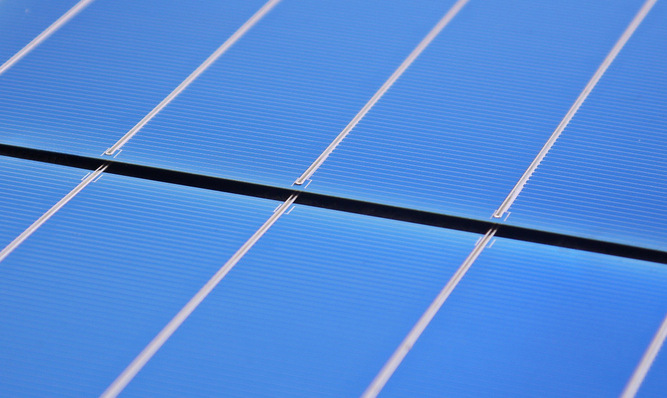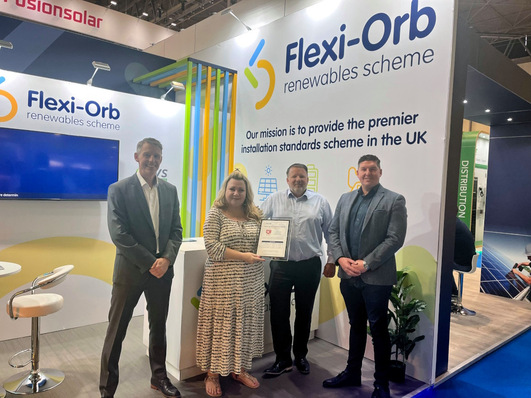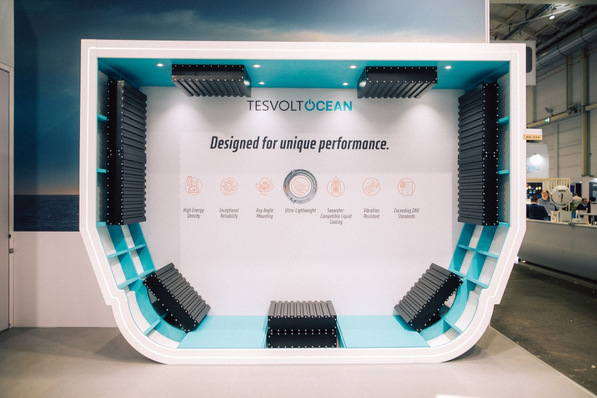The solar market is thriving, and demand for batteries is also rising steadily. Market researchers have predicted photovoltaics (PV) deployment of roughly 100 gigawatts (GW) for 2018. At the same time, the global market for batteries and fuel cells is already worth 5.5 billion euros and is forecast to exceed 81 billion euros by 2025. The industry’s impressive growth is fueling a boom in production.
Focus more closely on production technologies
Everything points to a continuing upward trend in the coming years – prompting Intersolar and ees Europe to focus more closely on production technologies. In 2019, the two energy exhibitions will dedicate a whole hall to this topic for the first time. Exhibitors and trade visitors can learn all about PV and battery production technologies in hall C1 from May 15–17, 2019 in Munich. And at the Production Technologies forum, they will gain essential first-hand knowledge of the latest developments and innovations.
Solar energy is playing an increasingly dominant role in the energy industry. Forecasts for 2018 anticipated that new solar power systems with a capacity of around 100 GW would be installed worldwide. The trade association SolarPower Europe even predicts that, within the next five years, more than 1,000 GW of PV power will be installed. This upward trend is being driven by innovative and cost-effective production technologies, a rapid rate of progress, and guaranteed quality and reliability. The outlook for the storage market is equally promising. Bloomberg New Energy Finance predicts that the annual installation rate of stationary storage devices will increase significantly by 2030. Another factor driving growth on the battery market is the rapid expansion of e-mobility.
The combination of a booming market, pressure to innovate, and plans for new production plants around the world means that manufacturers now need to expand production and utilize the latest technologies.
E-mobility drives growth on the battery market
In Germany, the market for battery storage systems has tripled over the past three years and more than 100,000 solar storage units are already in operation as of August. Demand for high-capacity commercial storage systems is growing, too. In June, for example, a battery storage facility with a capacity of more than 50 megawatt hours (MWh) was set up in Pelham, England to provide grid services. The research institute Bloomberg New Energy Finance predicts that the annual installation rate of stationary storage devices will increase significantly to a capacity of 125 GW with a storage volume of 305 gigawatt hours (GWh) by 2030.
Alongside stationary storage equipment, mobile systems are also contributing significantly to the boom in the storage market. With electric vehicles expected to make up a third of all new vehicle registrations worldwide perhaps within a decade, the demand for batteries is increasing, too. A number of businesses and consortia are currently setting up large-scale production plants for lithium-ion battery cells in Europe to respond to this demand. Politicians have also recognized the need for greater manufacturing capacities and have introduced incentive programs for battery production. Maroš Šefčovič, Vice-President of the European Commission and EU Commissioner for the Energy Union, seized the opportunity to promote the EU Battery Alliance at ees Europe 2018 in Munich. The goal of the battery alliance is to lay the groundwork for competitive and sustainable battery cell manufacturing in Europe. The German Mechanical Engineering Industry Association (VDMA) believes this to be a realistic goal, and sees potential for European battery cell manufacturers to gain a global market share of 30 percent. This will depend in large part on the machine and plant construction sector, as the supplier of production technologies and process innovations.
Large exhibition area for production technologies
To do justice to the current boom in the industry, Intersolar and ees Europe will set aside ample exhibition space for a special focus on production technologies for PV and batteries, with a whole hall dedicated to the topic. This will allow the PV and storage industry to present its production solutions and innovative manufacturing technologies. A comprehensive accompanying program including the Production Technologies forum will consolidate the focus on these areas. This makes the new hall C1 for PV and battery production the ideal place to learn about the latest trends, meet new business partners and network with global market players, in particular from East Asia.
Intersolar and ees Europe 2019 will draw trade visitors and exhibitors from over 160 countries – not just potential clients, but also future partners and a driving force for production. (HCN)
Stay informed, get our free newsletter twice a week, register here
More useful information
https://www.pveurope.eu/News/Energy-Storage/Europe-is-planning-battery-cell-production
https://www.pveurope.eu/News/Solar-Generator/Push-for-high-efficiency-n-type-solar-cells-and-modules
https://www.pveurope.eu/solar-modules/eu-pvsec-high-efficiency-solar-cells-rise







